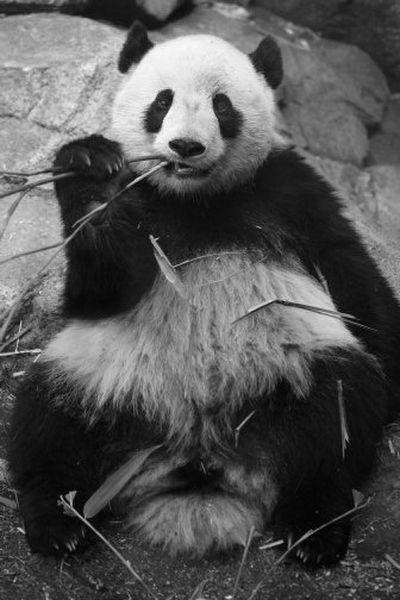Panda’s U.S. stay extended

WASHINGTON – He’s staying.
China’s ambassador to the United States announced Tuesday that Tai Shan, the popular giant panda cub, will remain in Washington for two more years before returning to China.
Mayor Adrian Fenty declared Tuesday “Panda Day” in the District of Columbia to celebrate the much-anticipated announcement. In celebration, zoo director John Berry presented Fenty with a framed photo of Tai Shan and a paw print.
Even though the panda cub was born here, he, like his parents, belongs to the government of China. Tai Shan’s parents, Mei Xiang and Tian Tian, are at the zoo under a 10-year, $10 million loan agreement. They arrived in December 2000 and are the focus of a research conservation and breeding program designed to preserve the species.
Under the loan agreement, any giant panda cub born to Mei Xiang at the zoo would be sent to a preserve in China for breeding purposes sometime after the cub’s second birthday. Tai Shan, the panda couple’s first offspring, turns 2 on July 9.
But in January, the zoo said on its Web site that a longer stay in Washington was the “subject of current negotiations between China and the zoo.” That announcement fueled hope within zoo circles that Tai Shan might linger in the American capital, since his services as a breeding partner probably would not be needed until he is 5 or 6.
Berry said the agreement to keep Tai Shan on U.S. soil until 2009 carries no price tag. “This was completely through the generosity of the People’s Republic of China,” he said.
Tai Shan (his name means Peaceful Mountain) was conceived through artificial insemination. The zoo’s panda reproductive efforts continued this month when scientists and veterinarians twice artificially inseminated Mei Xiang, on April 4 and April 5. Zoo veterinarians will not know for months whether those efforts were successful.
The three pandas are among the biggest attractions in Washington.
Tai Shan has drawn an estimated 2.25 million visitors since his public debut Dec. 8, 2005, zoo officials said. Millions more have watched him climbing and playing via Web cam.
Giant pandas, which are endangered, are difficult to breed, and the zoo’s three decades of struggling to produce a healthy cub resulted in many disappointments. A previous pair of pandas produced five cubs during the 1980s, but none lived more than a few days.
Today, 221 giant pandas live in zoos around the world and about 1,600 in the wild.